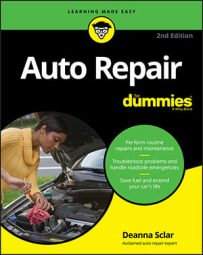If you find some rust spots on your car, don’t panic. If the rust is underneath the vehicle, on the underside of the body or bumpers where it doesn’t show, or confined to very small areas that can be touched up easily, you can probably take care of the matter yourself.
The paint on your vehicle is there not only for beauty but for protection as well. As long as your paint job is unmarred, metal body surfaces are safe. But something as seemingly innocuous as a small scratch can spell the beginning of trouble. Check the following trouble spots:-
Small scratches, nicks, and spots where the paint may have flaked off: Touch up the paint in those areas before rust or corrosion can form on the bare metal.
-
Dark spots in the paint: These may indicate that the metal is rusting underneath.
-
Pitted places in the paint and on the chrome and metal trim: Treat these spots with rust remover, following the directions on the package.
-
Each time you wash the car, take a flashlight and check around the fenders, in the wheel wells, and behind metal bumpers.
-
Shine a light into the little crevices between the car body and all the trim and moldings that are affixed to it. Look all around the lights, windows, side mirrors, sunroof, and antenna, too.
-
If you live in a damp area, check the metal surfaces inside the vehicle.
-
One of the most insidious places rust forms is under your vehicle, where you can’t see it. The next time you bring your car in for service, have the shop put it up on the hoist and check its underbody thoroughly.
-
Gently scrape away the rust with a single-edged razor blade or fine-grain sandpaper.
For slightly larger painted areas, use a brush with stiff (but not metal) bristles. Use coarse sandpaper to grind the rust off large areas that are out of sight and not surrounded by paint. Rust remover can make this job easier if you apply it after you get the crusty stuff off the surface.
Always work inward from the edges to avoid extending the area by damaging the paint. Don’t turn a small job into a large one by carelessly damaging the surrounding paint!
-
After you’ve removed all the rust, apply some rust arrestor to keep the rust from spreading further.
-
As soon as the area is dry, prime and paint it to protect the surface and restore it to its former beauty.
If your vehicle seems worth the effort and money and is mechanically sound, bite the bullet and get it fixed professionally. Otherwise, it’s time to get yourself another set of wheels.

